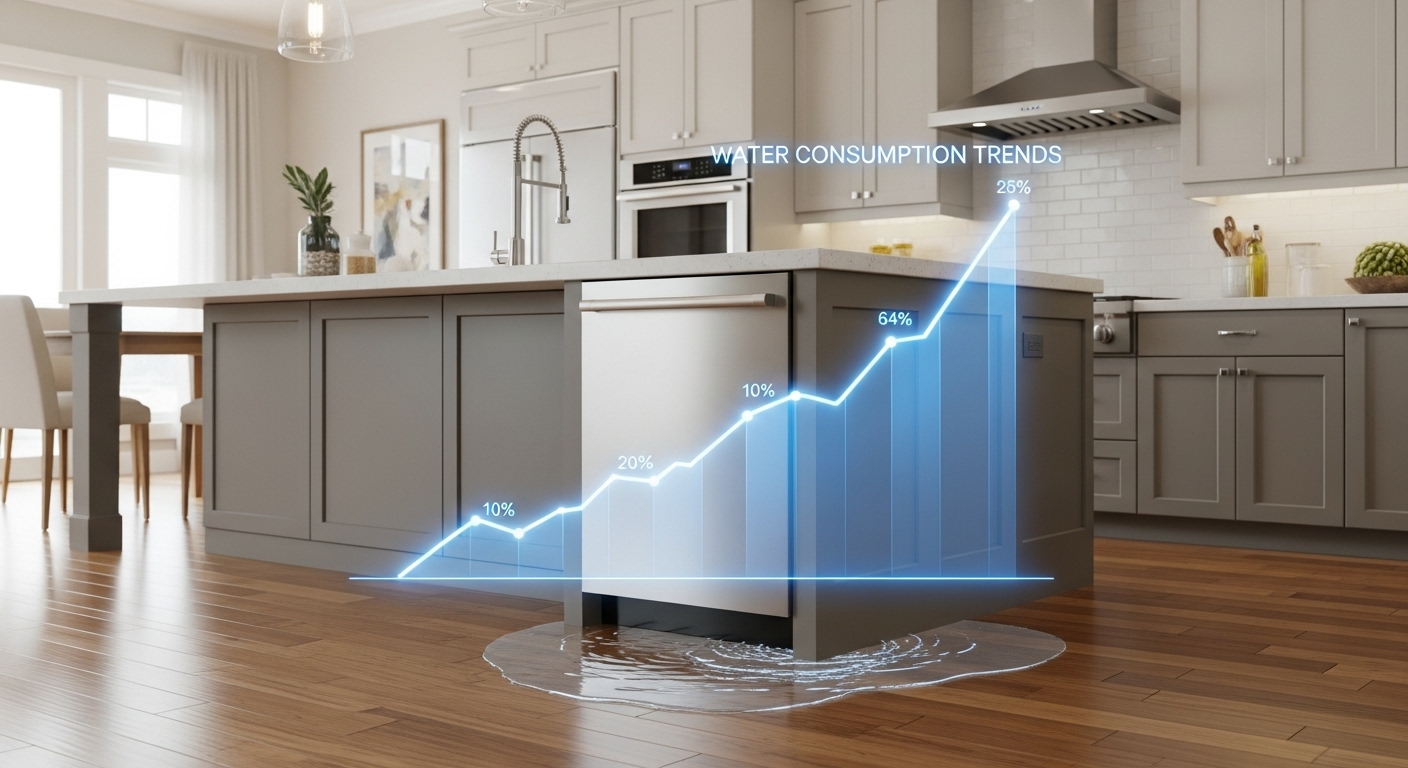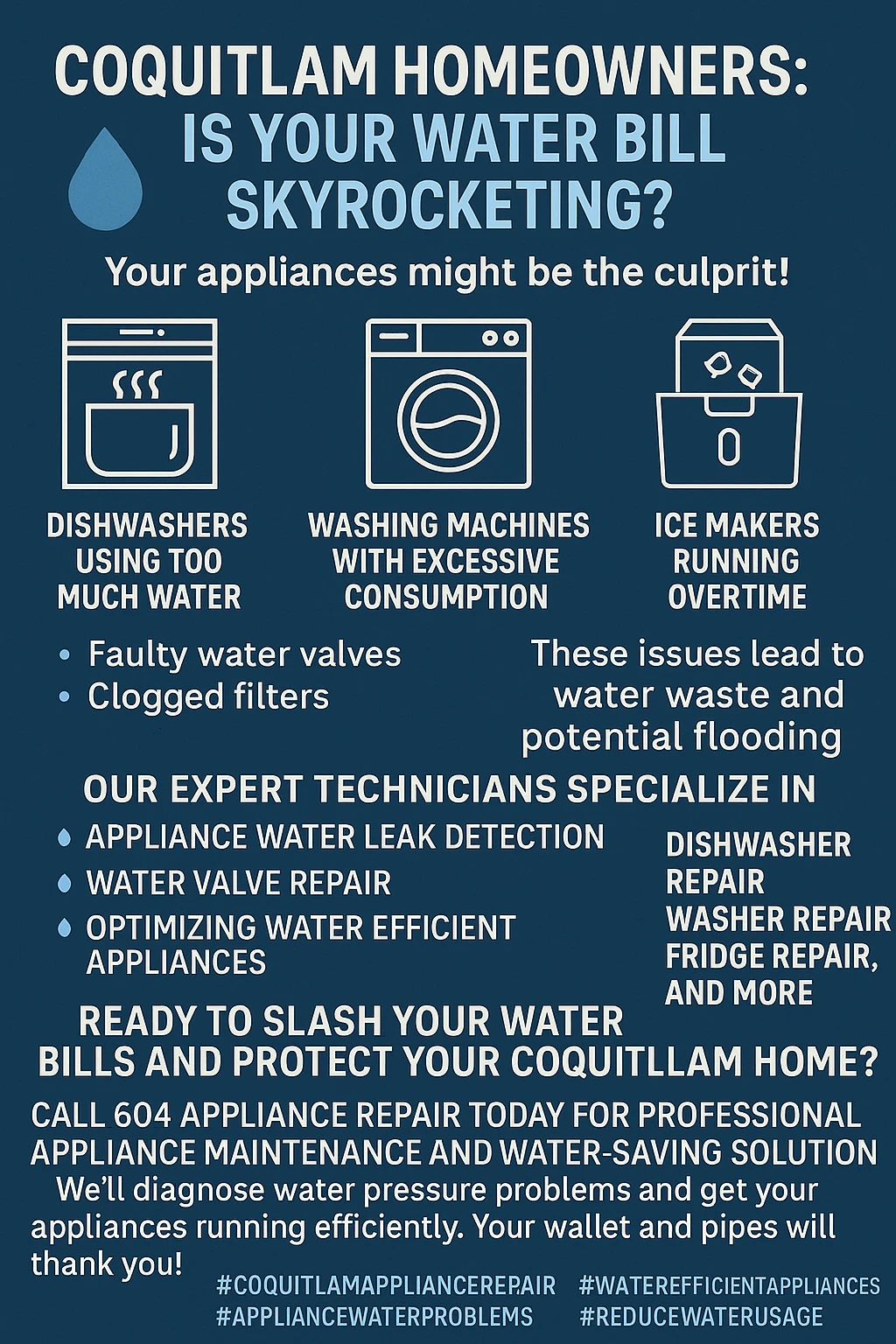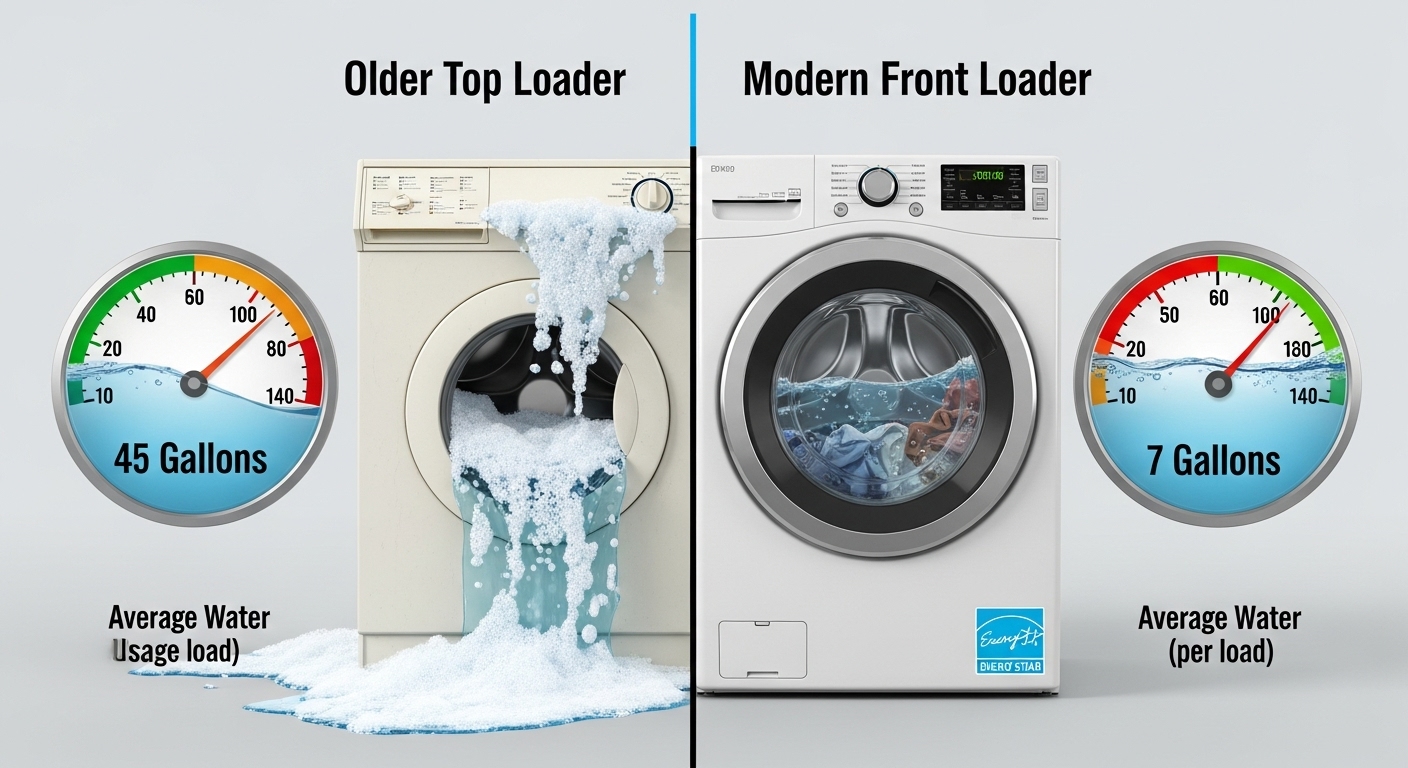
Wondering why your dishwasher, washing machine, and ice maker are driving up your water bills faster than ever before? The truth is that aging appliances, undetected leaks, and improper water pressure are causing Coquitlam homeowners to waste thousands of gallons annually—and we’ll show you exactly how to identify these hidden culprits and implement cost-effective solutions that can cut your water consumption by up to 30% while preventing expensive plumbing damage.  Modern Coquitlam households face an unprecedented challenge with appliance water consumption that extends far beyond simple conservation awareness. The convergence of aging infrastructure, seasonal demand pressures, and evolving municipal water costs creates a complex environment where homeowners must navigate both immediate financial impacts and long-term sustainability concerns. Understanding this challenge begins with recognizing that Coquitlam’s enhanced water conservation strategy aims to achieve no net increase in summer-time consumption until 2035 while accommodating continued population growth, placing individual household efficiency choices at the center of broader regional planning efforts. The financial implications of appliance water consumption extend beyond monthly utility bills to encompass potential infrastructure damage, insurance claims, and premature appliance replacement costs. When homeowners fail to address inefficient water usage patterns, they contribute not only to their own escalating expenses but also to regional peak demand pressures that could necessitate costly municipal infrastructure investments. The interconnected nature of these challenges means that effective solutions must address multiple factors simultaneously rather than focusing on isolated efficiency measures.
Modern Coquitlam households face an unprecedented challenge with appliance water consumption that extends far beyond simple conservation awareness. The convergence of aging infrastructure, seasonal demand pressures, and evolving municipal water costs creates a complex environment where homeowners must navigate both immediate financial impacts and long-term sustainability concerns. Understanding this challenge begins with recognizing that Coquitlam’s enhanced water conservation strategy aims to achieve no net increase in summer-time consumption until 2035 while accommodating continued population growth, placing individual household efficiency choices at the center of broader regional planning efforts. The financial implications of appliance water consumption extend beyond monthly utility bills to encompass potential infrastructure damage, insurance claims, and premature appliance replacement costs. When homeowners fail to address inefficient water usage patterns, they contribute not only to their own escalating expenses but also to regional peak demand pressures that could necessitate costly municipal infrastructure investments. The interconnected nature of these challenges means that effective solutions must address multiple factors simultaneously rather than focusing on isolated efficiency measures.
Key Outtakes
- Appliances manufactured before the mid-1990s consume dramatically more water per cycle than modern efficient alternatives, with older washing machines using up to 45 gallons per load compared to high-efficiency models that use only 7 gallons per load.
- Undetected appliance leaks waste an average of 180 gallons per week per household, equivalent to 9,400 gallons annually, and can be caught within 30 days using smart water monitoring systems before causing expensive structural damage.
- High water pressure above 60 PSI forces appliances to use 15 extra gallons per 10 minutes of operation while simultaneously shortening appliance lifespan and increasing leak risk.
- Strategic appliance replacement with ENERGY STAR certified models can reduce household water consumption by 20-30% with payback periods of one to three years through combined water and energy savings.
- Proper behavioral changes like running full loads, avoiding pre-rinsing, and using cold water cycles can multiply the efficiency benefits of modern appliances without requiring additional investment.

Understanding Excessive Appliance Water Consumption in Coquitlam Homes
The water consumption crisis affecting Coquitlam households stems from a combination of technological, behavioral, and infrastructure factors that compound to create significant financial and environmental costs. Coquitlam’s water consumption patterns reveal that summer usage typically exceeds winter consumption by 55%, creating enormous strain on municipal systems and individual household budgets. This seasonal surge places particular pressure on appliances that operate continuously throughout the year, as their baseline consumption becomes amplified during peak demand periods when outdoor irrigation and recreational water use also increase dramatically. The challenge becomes more complex when examining the age distribution of appliances in Coquitlam homes. Many residential properties contain appliances installed during the 1990s and early 2000s, when water efficiency standards were significantly lower than current requirements. These older appliances continue operating reliably from a functional perspective, leading homeowners to delay replacement despite the substantial ongoing costs associated with their inefficient water consumption patterns. The result is a hidden penalty that affects thousands of households across the region. Appliance water consumption also intersects with broader infrastructure challenges affecting water pressure, system maintenance, and leak detection. When municipal water pressure fluctuates or exceeds optimal ranges, household appliances experience accelerated wear and increased consumption that homeowners rarely connect to the underlying pressure issues. This creates a cascading effect where infrastructure problems amplify appliance inefficiencies, leading to compounded waste and accelerated equipment failure. The financial mathematics of appliance water consumption become particularly stark when analyzed across annual usage patterns. A household operating a pre-1995 washing machine consumes approximately 13,500 gallons annually for laundry alone, compared to 2,100 gallons for a modern high-efficiency front-load machine performing the same workload. This difference of 11,400 gallons represents substantial direct costs in water and sewer charges, plus the associated energy costs for heating water, creating a total annual penalty that often exceeds the purchase price of a replacement appliance.  Understanding the scope of this consumption problem requires recognizing that most homeowners significantly underestimate their appliance-related water usage. Research on indoor water consumption patterns demonstrates that the average American household uses approximately 138 gallons daily for all indoor purposes, with major appliances representing the largest controllable consumption category after basic sanitation needs. For Coquitlam residents operating on metered water billing, this translates to direct monthly costs that can be reduced through strategic appliance management.
Understanding the scope of this consumption problem requires recognizing that most homeowners significantly underestimate their appliance-related water usage. Research on indoor water consumption patterns demonstrates that the average American household uses approximately 138 gallons daily for all indoor purposes, with major appliances representing the largest controllable consumption category after basic sanitation needs. For Coquitlam residents operating on metered water billing, this translates to direct monthly costs that can be reduced through strategic appliance management.
The Dishwasher Water Crisis: Hidden Consumption and Damage Risks
Dishwashers represent one of the most misunderstood appliances regarding water consumption, with many Coquitlam homeowners operating under misconceptions that lead to both inefficient usage patterns and unnecessarily high water bills. Modern dishwasher water consumption varies dramatically based on the age and efficiency rating of the appliance, creating substantial differences in operating costs that compound over time. An ENERGY STAR certified dishwasher uses 4 gallons or less per wash cycle, while pre-1994 models consume between 9 to 15 gallons per cycle, representing a difference that can exceed 3,000 gallons annually for households that run their dishwasher daily. The water efficiency comparison between dishwashers and hand-washing reveals counterintuitive findings that challenge common assumptions. When homeowners wash a full load of dishes by hand with continuously running water, they typically consume 27 gallons, compared to the 4 gallons used by an efficient dishwasher for the same load. Even careful hand-washing with filled basins rather than running water typically requires 5 gallons per load, making modern dishwashers significantly more water-efficient for equivalent cleaning tasks. However, the water consumption advantages of dishwashers can be negated by inefficient usage patterns that many homeowners adopt without recognizing the associated costs. Pre-rinsing dishes before loading them into the dishwasher wastes approximately 6,000 gallons annually per household while also reducing dishwasher efficiency, as modern units depend on soil sensors that optimize cycle length and water usage based on the detected level of food residue. When dishes are pre-rinsed to remove visible soil, sensors may select shorter cycles that don’t provide optimal cleaning results, leading homeowners to run additional cycles or resort to hand-washing particularly dirty items. The hidden danger of dishwasher operation lies in leak development that often goes undetected until significant damage occurs. Dishwashers rank among the three most common appliances causing residential water damage, alongside washing machines and water heaters. The specific vulnerability stems from the concealed nature of dishwasher connections and the gradual development of leaks at inlet valves, hose connections, and door seals. Water damage from dishwasher leaks typically ranges from $3,500 to $7,500 for moderate cases involving extraction and remediation, while severe damage affecting flooring and structural elements can exceed $15,000 in restoration costs.  Dishwasher leak prevention requires systematic attention to components that homeowners can inspect regularly without professional assistance. Monthly inspection of the area beneath the dishwasher can reveal early signs of water accumulation from inlet valve drips before they escalate to cause cabinet damage or floor penetration. The water inlet valve represents the most common failure point, particularly in homes with high water pressure that exceeds the valve’s design specifications. Visual inspection for corrosion, mineral buildup, or loose connections can identify problems before they progress to active leaks. The relationship between water pressure and dishwasher performance represents a critical factor that most maintenance discussions overlook. When household water pressure exceeds 80 PSI, dishwashers experience accelerated wear on internal components, particularly the inlet valve seal that must accommodate higher pressures than intende
Dishwasher leak prevention requires systematic attention to components that homeowners can inspect regularly without professional assistance. Monthly inspection of the area beneath the dishwasher can reveal early signs of water accumulation from inlet valve drips before they escalate to cause cabinet damage or floor penetration. The water inlet valve represents the most common failure point, particularly in homes with high water pressure that exceeds the valve’s design specifications. Visual inspection for corrosion, mineral buildup, or loose connections can identify problems before they progress to active leaks. The relationship between water pressure and dishwasher performance represents a critical factor that most maintenance discussions overlook. When household water pressure exceeds 80 PSI, dishwashers experience accelerated wear on internal components, particularly the inlet valve seal that must accommodate higher pressures than intende
